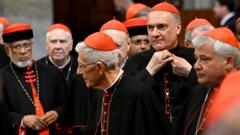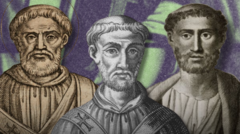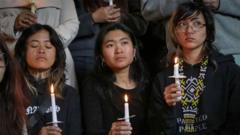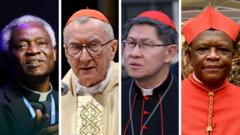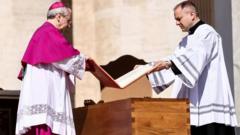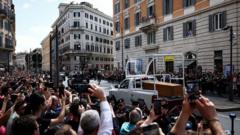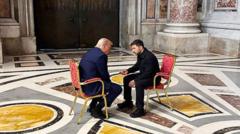Pope Francis's funeral, simpler than those before it, will still draw significant global attention as leaders and followers gather in Vatican City to honor his legacy.
Pope Francis's Funeral: A Transition from Tradition to Simplicity
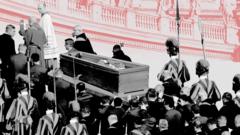
Pope Francis's Funeral: A Transition from Tradition to Simplicity
The farewell to Pope Francis highlights his desires for a humble yet ceremonial send-off.
The world prepares to say goodbye to Pope Francis, who has opted for a less extravagant funeral compared to his predecessors, while still reflecting the solemnity of the occasion as the leader of over one billion Catholics. His passing has led to an influx of attendees including dignitaries, religious leaders, and thousands of devotees converging on Vatican City to pay their final respects.
The ceremonial proceedings are scheduled to begin with archbishops and bishops gathering at 08:30 local time in the Constantine Wing near St Peter's Basilica, followed closely by priests assembling in St Peter's Square. Orthodox patriarchs and cardinals will meet inside Saint Sebastian Chapel as they prepare to process alongside the Pope's coffin, which has laid in the center of the basilica for several days. The formal service will commence at 10:00 AM with the coffin positioned prominently in front of St Peter's Basilica, led by Cardinal Giovanni Battista Re. The ceremony will include close seating for guests and clergy, with a significant number of public attendees positioned both in the basilica and throughout St Peter’s Square.
Anticipation is high for the funeral, with estimates of around 250,000 attendees and representatives from approximately 170 nations, including Prince William on behalf of King Charles III. Clergy attire will comply with traditional funeral customs, distinguished by the respective ranks, with bishops and cardinals in their formal liturgical garments, all while embracing the simplicity emphasized by Pope Francis in his directive for a modest farewell.
In a departure from age-old customs, the Pope's body will be dressed in a simple red chasuble and a damask mitre. His burial site at the basilica of Santa Maria Maggiore marks a historic moment, as it will be the first time since Leo XIII's passing in 1903 that a Pope is buried outside the Vatican. This simpler burial request was made to emphasize the Pope's role as a servant rather than a figure of worldly power.
Pope Francis was known for his deep devotion to the Virgin Mary, evident in his choice of burial location. Santa Maria Maggiore, home to the Salus Populi Romani icon, is an ancient Marian sanctuary where the Pope found solace throughout his papacy. His final resting place will be modest and placed within the basilica's side aisle, close to symbols of peace and divine protection, reflecting his lifelong commitment to faith and guidance from the Virgin Mary.
The Pope's request for simplicity extends even to his tombstone inscription, simply stating "Franciscus," resonating with his desire for humility even in death. This final journey embodies the spirit of a shepherd, dedicated to Christ, serving as a poignant capstone to a legacy defined by compassion and humility.


